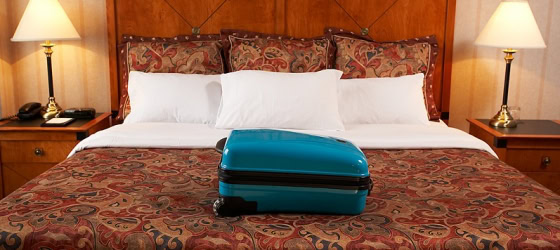Hotels – Global Industry Awakening from COVID Slumber

The global hotel industry closed 2021’s first quarter with corridors recovering unevenly. Following a year of what Hotstats, the Worcester, U.K.-based hospitality tracker, described as “struggling” occupancy, some improvement is noticeable everywhere. For hospitality laundries, whose recovery depends on this sector, it was a hopeful sign, but also an indication of how far the sector has to go.
Reflecting the need for improvement: increases cited in the Hotstats report were on a year-over-year basis, measuring on a percentage basis against March 2020, when lockdowns were prevalent. As David Eisen, the firm’s hotel intelligence and customer solutions director, said, “The global hotel industry is – slowly – stirring from hibernation and seeing modest gains in traveler demand. The wait has been long, and it remains a work in progress.” A summary of findings, by region, plus a worldwide forecast, appears below:
United States: He characterized the U.S. recovery as making small gains in most key performance indicators “though the strides only shined a light on the decrepitude that was 2020.” Occupancy hit nearly 37%, up 6 percentage points from March 2020. GOPPAR (gross operating revenue per available room) was up 328.9% ($30.63) over the same time last year, when it was $-13.38. March was one of eight 2020 months with negative profit; March 2021’s GOPPAR was the highest since February 2020 and $20 higher than the previous month. March was also the first time in a year that year-over-year RevPAR (revenue per available room) rose (4%, $69.71), also up $20 from February 2021. TRevPAR (total revenue per available room) jumped 11% ($100.45), the first rise above triple digits, aided mostly by the overall increase in rooms revenue, despite still muted ancillary revenue. Expenses stayed under control, with total labor costs down 55% over the same period a year ago. Profit margin was up 42.4 percentage points (30.5%), the highest mark since February 2020 and a number more in line with historical levels.
Europe: With negative GOPPAR in March (down 14%, -€8.45), the region is six months into a slump in this stat, last recording positive GOPPAR in September 2020. Overall occupancy has yet to exceed 20% and RevPAR and TRevPAR each were off 58% (€14.62, €25.56). Overall expenses were down, with a 53.3% drop PAR in labor, but because sales are so much lower, labor increased 6.8 percentage points as a percentage of total revenue. Eisen posited that Europe could be the next frontier for emulating the United States in shaking off “doldrums on the back of a wide distribution of vaccines. Europe is trying to do the same now.” The European Union’s decision to allow fully vaccinated Americans back in is a good first step, he said.
Middle East: He described the region as having continued its ascent. Occupancy is steady (just below 50%); RevPAR is up 58.3% ($72.65); TRevPAR, up 44.3% ($119.74). GOPPAR skyrocketed 5,527% to $37.70 in the month, which was well up over March 2020, when it broke even. Profit margin was 31.5%, 30.7 percentage points better than last March and 12 percentage points better than February. “Like APAC, the Middle East is showing signs of cost creep. Though total labor costs continued to be down year over year, both utilities and overheads moved up, a sign that operations are resetting to a closer point of normalcy,” Eisen said.
Asia Pacific (APAC): With occupancy passing 50% and an average daily rate above $100, Asia-Pacific saw revenue per available room (RevPAR, room revenue only) 115% higher ($53.54) and total RevPAR (TRevPAR, includes F&B and other revenue) 110% higher ($97.02) than the same time last year. Gross operating profit PAR (GOPPAR) was up 297% ($23.77). Profit margin hit 24.5%, nearly 52 percentage points higher year-over-year. The region reflects what Eisen fears could become a worldwide trend: greater expenses, as total labor costs and total overheads rose 13% and 14.8% respectively. Hotel operators might be too driven to increase revenue and lose focus on converting revenue to profit, given the slight cost uptick.
Global Forecast: Reporting on an April 12-17 poll of 900+ Global Business Travel Association members, GBTA concluded that nearly one-quarter of businesses had resumed nonessential business travel or developed a plan for resuming travel. Positive signs from the survey included an increase in willingness to travel, a decrease in trips canceled and a more optimistic view toward returning to the road as travel bookings continue to increase.
Regarding international trips, 89% of companies have canceled or suspended most or all, compared with 61% for domestic travel. By destination, 67% have suspended or canceled most are all to the United States, less than China (92%), other APAC countries (91%), Europe (88%), Latin America (87%) and Canada (84%).
